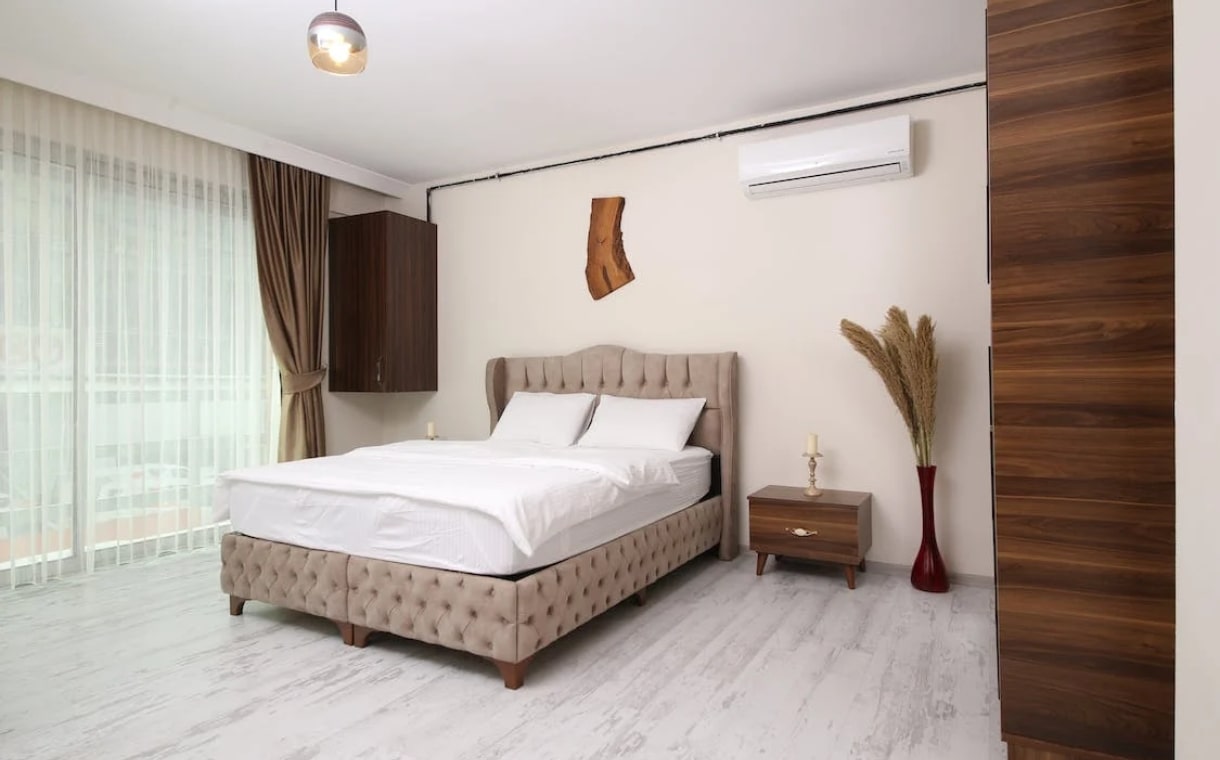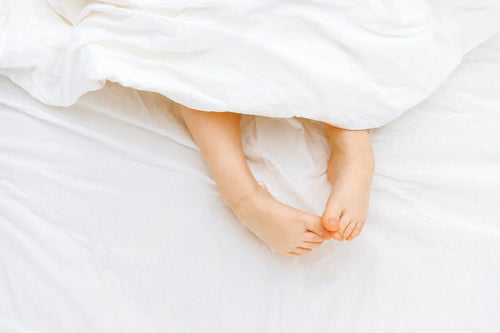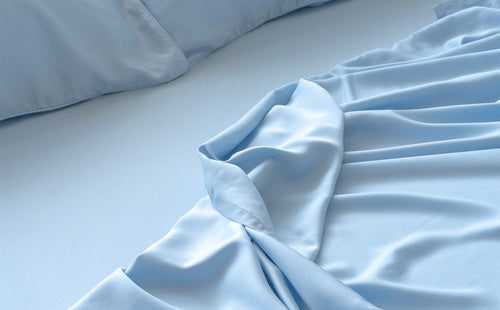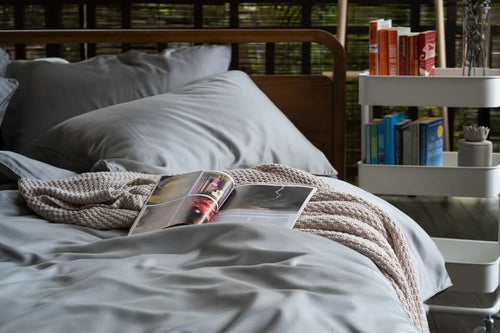At a Glance
Tired of always sleeping hot and stuffy? We have a list of the best cooling bed sheet materials to help you achieve uninterrupted sleep!
Quick Tips
- Ideally, your sleeping temperature should be between 18°C to 26°C.
- Weave type, thread count, etc. all help determine the sheet's cooling ability.
Featuring Weavve’s Signature TENCEL™ Classic Set In Fern Green
Sleeping hot and stuffy is a feeling familiar to many especially in Singapore’s relatively warm and humid climate. Needless to say, such discomfort could easily prevent you from getting that much needed rest when you spend most of your night tossing and turning due to night sweats. It is often that disrupted sleep is simply dismissed as ‘a bad night’ of sleep and you may be quick to accept that your sleep is just not that great.
However, considering that we spend about a third of our lives sleeping, getting quality sleep could be more important than we realise. When we sleep, our bodies naturally restore themselves and refresh the brain which are essential in keeping a healthy immune system and enabling us to remain productive when we are awake.
So, exactly how crucial is finding the ideal temperature for a good night’s rest and what is the best material for bed sheets to stay cool?
How Temperature Affects Sleep
A study carried out by the International Journal of Environmental Research and Public Health, showed that sleep environment temperature affected sleep satisfaction, sleep calmness and the ease of falling asleep. More specifically, it reflected that higher bedroom temperatures often led to a higher chance of disrupted sleep as well as an overall decrease in sleep quality.

Image By Andrea Piacquadio From Pexels
This was due to the fact that we produce more stress hormones (cortisol) in hotter temperatures. Additionally, sleeping hot can also decrease the time spent in REM sleep which negatively affects the body’s immune systems as well as lessen memory and learning abilities.
Furthermore, it is harder to fall asleep in higher temperatures as our bodies naturally have a “body clock” called the circadian rhythm which regulates our sleep and wake times. This rhythm is influenced by a few main factors such as the exposure to light, temperature of our surroundings, and our level of physical activity. In higher temperatures, your body tends to be more alert which makes it harder to fall asleep when you are feeling hot.
What Is The Ideal Temperature For Sleep?

Image By suhel vba From Pexels
The ideal sleep temperature for everyone is different, there is no ‘perfect sleeping temperature’ however the National Sleep Foundation suggests that the optimum sleeping temperature is anywhere between 18°C to 26°C. A temperature range as mentioned earlier hardly occurs naturally in Singapore’s climate at night especially in the summer months.
The most common solution would be to use air conditioning to cool your room down and while that works just fine, it could incur cost as well as damage the environment with frequent use. Furthermore, a downside to sleeping in an air conditioned room would be that you most likely won’t be getting any natural air ventilation while you’re sleeping which could also negatively affect your sleep quality.
The Cost-Effective Alternative: Bed sheets That Stay Cool
Featuring Weavve’s Signature TENCEL™ Deluxe Set In Cloud White
Instead of turning on your air conditioner or fan to cool down your room, you could opt for cooling bed linen as an alternative to manage your sleeping temperature. Cooling bed sheets can also be seen as an investment for both your sleep quality and wallet in the long run with them being more eco friendly as well.
Not to mention you could keep your bedrooms well ventilated with open windows as well since your need to use the air conditioning would either be reduced or removed altogether.
What Properties Make A Cooling Bed Sheet?
There are a number of factors that determine how cool your sheets will feel, namely; type of material, breathability, moisture absorbency, weave type, and thread count.
1. Moisture-Wicking Abilities

Image By Karolina Grabowska From Pexels
A sheet’s moisture-wicking abilities will determine how much it can keep you feeling fresh and free of night sweats during your sleep. This property is also a key factor in temperature-regulating sheets as the ability to remove excess moisture will help lower your body temperature.
2. Breathability
Following the factor of moisture absorbency, cool wicking sheets may manage moisture well but they are not always breathable which could induce your night sweats. As our bodies naturally regulate our temperature by sweating out the heat, this would be hard to do with less breathable sheets.
3. Type Of Weave

Image By Victoria Emerson From Pexels
The weave method of sheets not only affects the appearance but also the skin feel on how cooling the sheets can be. For instance, sateen and percale cotton sheets can give off different skin contact feels due to their difference in weave method.
4. Thread Count
Thread count also plays a key role in how cool your sheets can get, as higher thread count sheets trap heat, the National Sleep Foundation recommends bed sheets with a thread count of 200 to 400, depending on the cotton type. However, it also should be noted that thread count is not the largest determining factor on whether a sheet is of good quality. Some manufacturers also have a tendency to bump up the thread count by using multi-ply and lower quality threads.
5. Bed Sheet Material

Featuring Weavve’s Signature TENCEL™ Classic Set In Blush Pink
With all other factors covered, it now points down to the base of it all - the material of the sheets. The type of sheets you choose will vary based on your preferences however there are a few more popular choices for cooling sheet fabrics. Here is a breakdown amongst three popular cooling materials; cotton, bamboo, and TENCEL™ fibres (from eucalyptus) and how their properties allow for you to sleep cool.
Best Cooling Bed Sheet Material Comparison
1. Cotton Bed Sheets

Featuring Weavve’s Cotton Classic Set In Sandshell
Cotton fabrics have been a classic choice for many purposes ranging from clothing to bed linen. The words “Egyptian cotton” has also rolled off the tongues of many when picking a good quality cotton fabric. However this begs the question; do cotton fibres in general possess cooling properties?
Cotton is a naturally breathable where its cooling abilities could be further enhanced by its weave method. Typically, percale and sateen weaves are best suited for cooling and soft sheets as they are more breathable and lightweight. Cotton sateen sheets are slightly heavier than percale sheets as they have a complex weave structure but they are more wrinkle-resistant and quieter due to their silkier texture as compared to percale sheet’s crispier feel.
Unfortunately, cotton is the least eco-friendly option due to its cultivation method being responsible for a great deal of ecosystem damage around the world. Other sustainable alternatives like bamboo and TENCEL™ can yield the same cooling effects without doing much harm to the environment.
2. Bamboo Bed Sheets

Image By PNW Production From Pexels
Bamboo fibres have desirable qualities as well when it comes to making cooling sheets. They were found to be more breathable, softer and more flexible than cotton. Furthermore, an additional perk of bamboo fibres are that they are naturally antibacterial and antifungal.
So what qualities make bamboo sheets cooling? A study observing the fibre’s performance in warmer temperatures showed that they can efficiently reduce the heat trapped in your body. This is reflected in the fibre having the lowest thermal resistance amongst cotton and TENCEL™ fibres which will help to lower your core body temperature.
Although bamboo fibres are considered relatively eco-friendly and more so than cotton, it’s treatment processes can involve harmful chemicals such as sulfuric acid and carbon disulfide. Moreover, they also have the highest rate of shrinkage amongst the three materials and are prone to wrinkles and pilling after a while.
3. TENCEL™ Bed Sheets

Image From Lenzing AG
Last but certainly not least are eucalyptus Lyocell sheets that are made with TENCEL™ fibres by Lenzing AG. TENCEL™ Lyocell fibres are their latest generation of fibres by Lenzing AG and are also the coolest fibre type produced by them.
A study comparing the comfort properties of different fibres found that 100% TENCEL™ Lyocell fibres in comparison to bamboo rayon and cotton were the most breathable. Additionally, they have temperature-regulating properties which greatly contributes to their suitability of making cooling bed sheets. Their ability to effectively regulate temperature is a result of how excellent they are at managing moisture. This is due to the structure of the natural fibres which can easily absorb and release excess moisture thus lowering your body temperature and keeping hot sleepers sweat-free.
Featuring Weavve’s Signature TENCEL™ Classic Set In Lilac Mauve
Moreover, TENCEL™ Lyocell fabrics are durable and have a higher tear resistance than cotton and bamboo fabrics as well. The smooth surface area of the fibres allow for a silky smooth and soft feel which results in it being extra gentle and ideal for sensitive skin as well. Furthermore, the rate of bacterial growth is 10 times slower in comparison to bamboo and cotton fibres as its effective moisture management properties create unsuitable conditions for bacteria to grow.
From an eco-friendly perspective, TENCEL™ Lyocell fibres are also the most environmentally friendly as they are sustainably harvested following the guidelines of the Lenzing Wood and Pulp Policy and are (USDA) BioPreferred®.
While TENCEL™ Lyocell bed sheets are generally pricier than cotton and bamboo sheets due to the cost of their production processes, they are worth the investment for comfortable, cooling sleep.
Frequently Asked Questions: Cooling Bed Sheets
Do cooling sheets actually work?
What type of sheets keep you cool?
TENCEL™, bamboo, and cotton sheets all possess cooling properties at varying degrees. Amongst these three fabrics, TENCEL™ Lyocell sheets are the best choice for a cooling bed sheet due to their excellent moisture-wicking abilities and high breathability.
What is the coolest material for bedsheets?
TENCEL™ Lyocell fibres excel in regulating your core body temperature. The material is cool to the touch and breathable, thus allowing heat to move away from your body when you sleep. Night sweats are also tackled by this fabric with it being able to efficiently wick away excess moisture to ensure that you sleep fresh and comfortable through the night. Shop our best selling and ultra-cooling TENCEL™ Lyocell sheets!





































